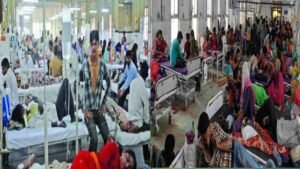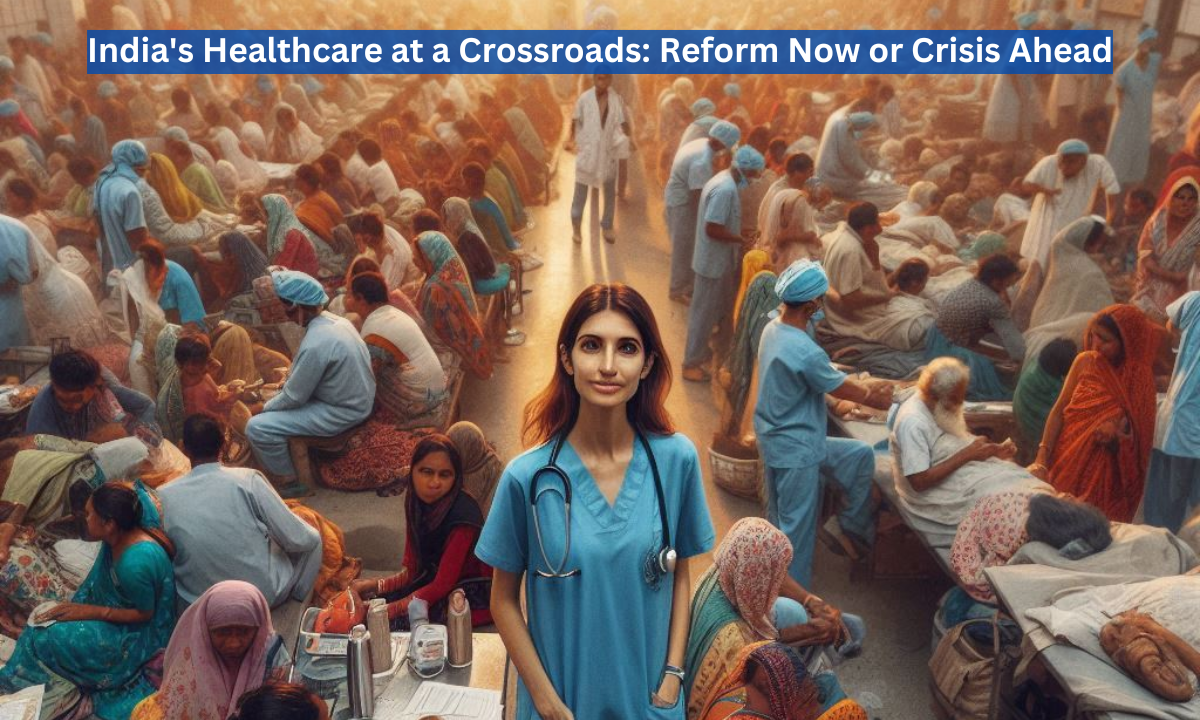Why India’s Healthcare Needs Urgent Overhaul: A Deep Dive
India’s healthcare system stands at a critical juncture, requiring comprehensive reforms to address the growing needs of its vast population. Despite significant progress over the years, the system faces numerous challenges, including inadequate infrastructure, workforce shortages, and disparities in access to care. To build a resilient healthcare system that can meet future demands, we must undertake strategic reforms that emphasize accessibility, affordability, quality, and innovation.

Current Challenges in India’s Healthcare System
1. Inadequate Infrastructure and Resources
India’s healthcare infrastructure is insufficient to meet the demands of its population, particularly in rural areas. Hospitals and clinics often lack essential medical equipment, supplies, and technology. Furthermore, the distribution of healthcare facilities is uneven, with urban areas being better served than rural regions.
2. Workforce Shortages and Distribution
There is a significant shortage of healthcare professionals in India, including doctors, nurses, and allied health workers. The World Health Organization (WHO) recommends a doctor-patient ratio of 1:1000, but India falls short of this standard. Moreover, the existing workforce is unevenly distributed, with a concentration of professionals in urban areas, leaving rural populations underserved.
3. Disparities in Access to Healthcare
Socioeconomic disparities greatly affect access to healthcare in India. The urban-rural divide, coupled with economic inequalities, means that many individuals cannot afford or access the care they need. Additionally, the lack of health insurance coverage exacerbates these disparities, leading to high out-of-pocket expenses for many families.
4. Quality of Care and Patient Safety
The quality of healthcare services in India varies widely, with many facilities failing to meet basic standards of care. Issues such as outdated protocols, lack of training, and insufficient oversight contribute to this variability. Patient safety is also a significant concern, with preventable medical errors and infections being common.
5. Rising Burden of Non-Communicable Diseases (NCDs)
India is witnessing a rapid increase in non-communicable diseases such as diabetes, cardiovascular diseases, and cancers. This shift in the disease burden poses new challenges for the healthcare system, which has traditionally focused on communicable diseases. Addressing NCDs requires a shift in focus towards preventive care and long-term management.
To learn more about global strategies and data on improving healthcare systems, explore the comprehensive resources provided by the World Health Organization on Health Systems Strengthening. Discover how these insights can guide our efforts to transform India’s healthcare.
Strategic Reforms to Strengthen the Healthcare System
1. Expanding and Modernizing Healthcare Infrastructure
To meet the growing healthcare demands, India must invest in expanding and modernizing its healthcare infrastructure. This includes building new hospitals and clinics, especially in underserved rural areas, and upgrading existing facilities with advanced medical technology. Public-private partnerships (PPPs) can play a crucial role in this expansion, providing the necessary funding and expertise.
2. Strengthening the Healthcare Workforce
Addressing the workforce shortage requires both short-term and long-term strategies. In the short term, increasing the number of healthcare professionals through accelerated training programs and recruitment drives is essential. Long-term strategies should focus on enhancing medical education, offering competitive salaries, and incentivizing professionals to work in rural areas.
3. Enhancing Access to Affordable Healthcare
To bridge the gap in access to healthcare, it is vital to implement policies that make healthcare services more affordable and accessible. Expanding health insurance coverage, particularly for low-income families, is a key step in this direction. Additionally, telemedicine services can be leveraged to reach remote areas, ensuring that even those in the most isolated regions receive timely care.
4. Improving Quality of Care and Patient Safety
Ensuring consistent quality of care across all healthcare facilities requires the establishment of standardized protocols and regular audits. Continuous professional development and training programs for healthcare providers are crucial to keeping them updated on the latest medical practices. Additionally, implementing a robust patient safety framework will help reduce the incidence of preventable errors and enhance overall care quality.
5. Addressing the Non-Communicable Disease Epidemic
To combat the rising burden of NCDs, a comprehensive approach that includes prevention, early detection, and management is necessary. Public health campaigns focusing on lifestyle changes, such as healthy eating and regular exercise, can help prevent NCDs. Furthermore, integrating NCD management into primary healthcare services ensures that patients receive continuous care and support.
Conclusion
Reforming India’s healthcare system is not just an option—it is an urgent necessity. By addressing the challenges of infrastructure, workforce shortages, accessibility, quality, and the rising burden of NCDs, we can build a healthcare system that is resilient, equitable, and capable of providing high-quality care to all citizens. Strategic investments, policy reforms, and innovative solutions will be the cornerstones of this transformation.
Join the conversation on the pressing need for healthcare reforms by reading about the Doctors Strike Nationwide: Urgent Call for Justice & Reforms. Learn how this movement is pushing for critical changes in the system.
My name is Mohd Ali, and I’m a digital marketer, content writer, creator, video editor, and blogger. Every day, I share information related to cricket and football on my blog. I reside in the city of Hyderabad, and I completed my graduation from EIILM University, Sikkim. I am the founder of newsblog4u.com.













2 thoughts on “India’s Healthcare Crisis: The Shocking Truth & Bold Fixes”